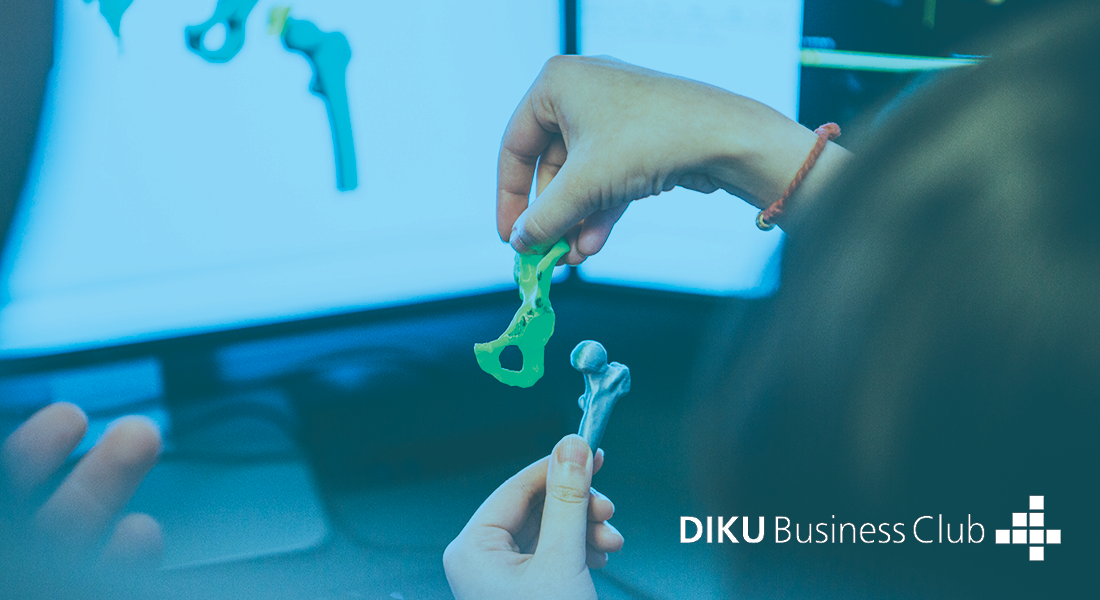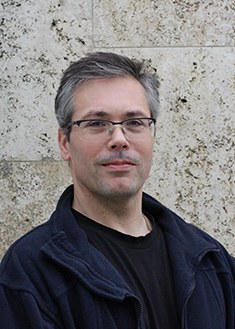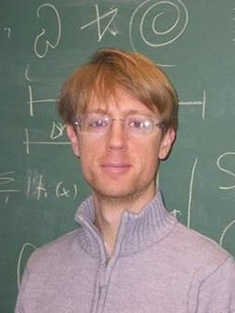Applying Advanced Simulation in the Health Sector

In most industries of today, the need for ultra-precise modelling and simulation tools for production improvement increases rapidly. But how do you build a model and how do you transfer the learning points from the model into real-life design and product improvement? Get more insights in this webinar featuring examples from the health tech industry co-hosted by DIKU and 3Shape.
Analysing biomechanical movements in the body using 3D Scanners and Data Analysis
In this webinar, you can see some of the results and methods developed by the RAINBOW project whose research objective is to create patient-specific simulation models that are rapidly set for a particular patient and easy-to-use by clinical experts.
Meet two of our PhD students, Faezeh and Torkan, who will present their research on predicting biomechanical movements and designing tools using 3D modelling. Listen to the perspective of industrial project partner 3Shape, who employs one of the PhD students and who joined the Rainbow project right from the beginning. After the presentations, you can ask questions to all presenters and indicate your interest in getting more insights into the project.
Who should participate?
If you are interested in simulation models, 3D analysis or AI, in general, you should join this webinar - whether as an industrial R&D specialist, as a researcher, clinical practitioner or simply if you are curious to learn more about cutting edge research in Healthtech and simulation.
The webinar is open to all interested persons.
Programme
| 14.00 | Welcome | Anders Pall Skött, Head of Business and Innovation, DIKU |
| 14.05 | Introduction to the RAINBOW Project - Objectives and Preliminary Results | Kenny Erleben, Associate Professor, DIKU |
| 14.10 | Towards a Biomechanical Understanding of the Hip Joint | Faezeh Moshfeghifar, PhD Student, DIKU |
| 14.30 | Predicting Tooth Motion from Physical Forces | Torkan Gholamalizadeh, PhD Student, 3Shape |
| 14.50 | Short break | |
|
15.00 |
3Shape use models of human physiology in R&D | Peter Søndergaard, Software Group Manager, 3Shape |
| 15.20 | Q&A Session | Moderated by Anders Pall Skött |
Presentations and speakers
Brief welcome session by Anders Pall Skött, Head of Business and Innovation at DIKU, who will introduce today's theme and speakers.
 Kenny Erleben is Associate Professor and heads the Computer Graphics & Simulation Lab at DIKU.
Kenny Erleben is Associate Professor and heads the Computer Graphics & Simulation Lab at DIKU.
Bio
Fundamental research in fields of computer simulation and computer graphics and applied research with related industry.
Current focus areas are:
- Fundamental research in modeling and computing friction forces for applications in entertainment, digital prototype of mechanical systems, training systems and robotics
- Rapid bio-mechanical modeling for medical applications
- Simulation of soft robotics dynamics for control by artificial intelligence.
Teaching
Computer simulation, computer graphics and computer animation.

For population studies a biomechanical understanding of the hip joint is a prerequisite for understanding tendencies and correlation to treatment plans.
Faezeh Moshfeghifar has created a ‘simulator’ for clinical use to obtain an intimate understanding of biomechanical originated pathologies or injuries in a population. To achieve minimal user-intervention, she uses registration methods to generate quality meshes from images of pelvic region obtained from open data sets. Faezeh Moshfeghifar’s research will create a design decision tool for clinical experts combining automatic meshing tools with biomechanical FEM analysis.
 3Shape TRIOS is a proven technology for creating 3D reconstructions of the teeth and gums and the design of aligners.
3Shape TRIOS is a proven technology for creating 3D reconstructions of the teeth and gums and the design of aligners.
Focusing on the field of medical image analysis, Torkan Gholamalizadeh's research at 3Shape focuses on mechanics-aware interactive design tools for orthodontics and predicting teeth movements in orthodontic treatments by developing computational models of the human jaw.
This involves generalizing biomechanical models of tooth movement for different patients using statistical models as well as predicting tooth motion from physical forces coming from braces or aligners.”
 Abstract:
Abstract:
In this talk I will give some practical examples of how 3Shape used mathematical models of human physiology when developing medical devices in R&D
Bio:
Peter Søndergaard is the group manager of the 3Shape Dental AI team at 3Shape A/S. The team specializes in research and development of algorithmic and machine learning solutions to problems in dentistry, maturing new ideas into medically validated, production quality code.
Peter has a PhD degree from Denmark's Technical University (DTU) in mathematics. He has previously worked in the hearing aid industry. He has been with 3Shape since 2017.
Ask questions to the panellists - moderated by Anders Pall Skött
About the RAINBOW Research Project
RAINBOW consists of 7 universities, 1 hospital, 7 industrial partners, located in Denmark, Spain, Luxembourg, England, France and Germany. See details in the list of participants in the RAINBOW project here. The funding is provided by the European Union’s Horizon 2020 research and innovation programme under the Marie Sklodowska-Curie.
The RAINBOW network, which is managed by Associate Professor Kenny Erleben at DIKU, develops simulation models for the clinical sector and educates 15 international PhD fellows who will be exposed to clinical practice and get close to patients and clinical experts while working both with theory and creating software, designing tools, etc.

